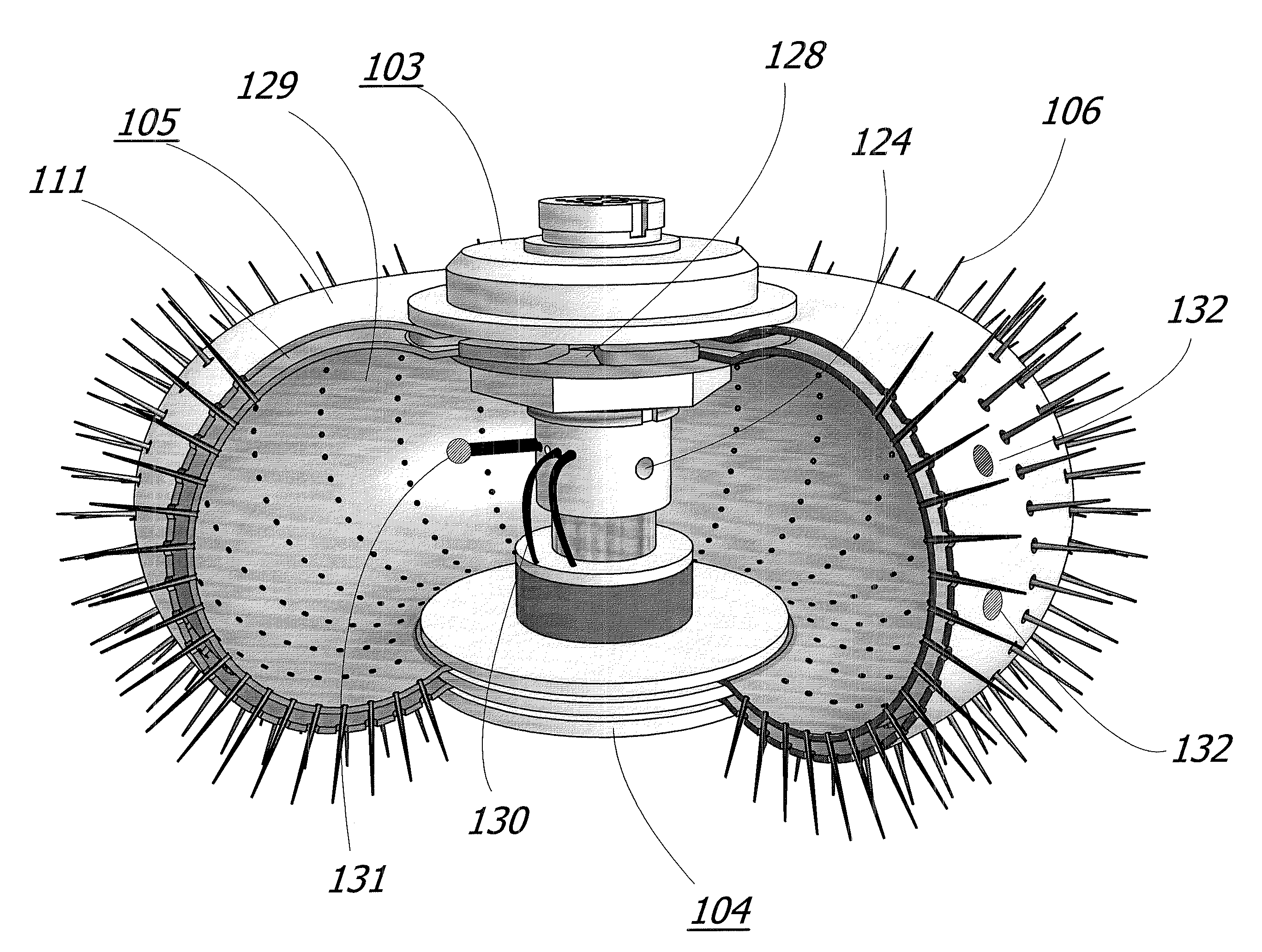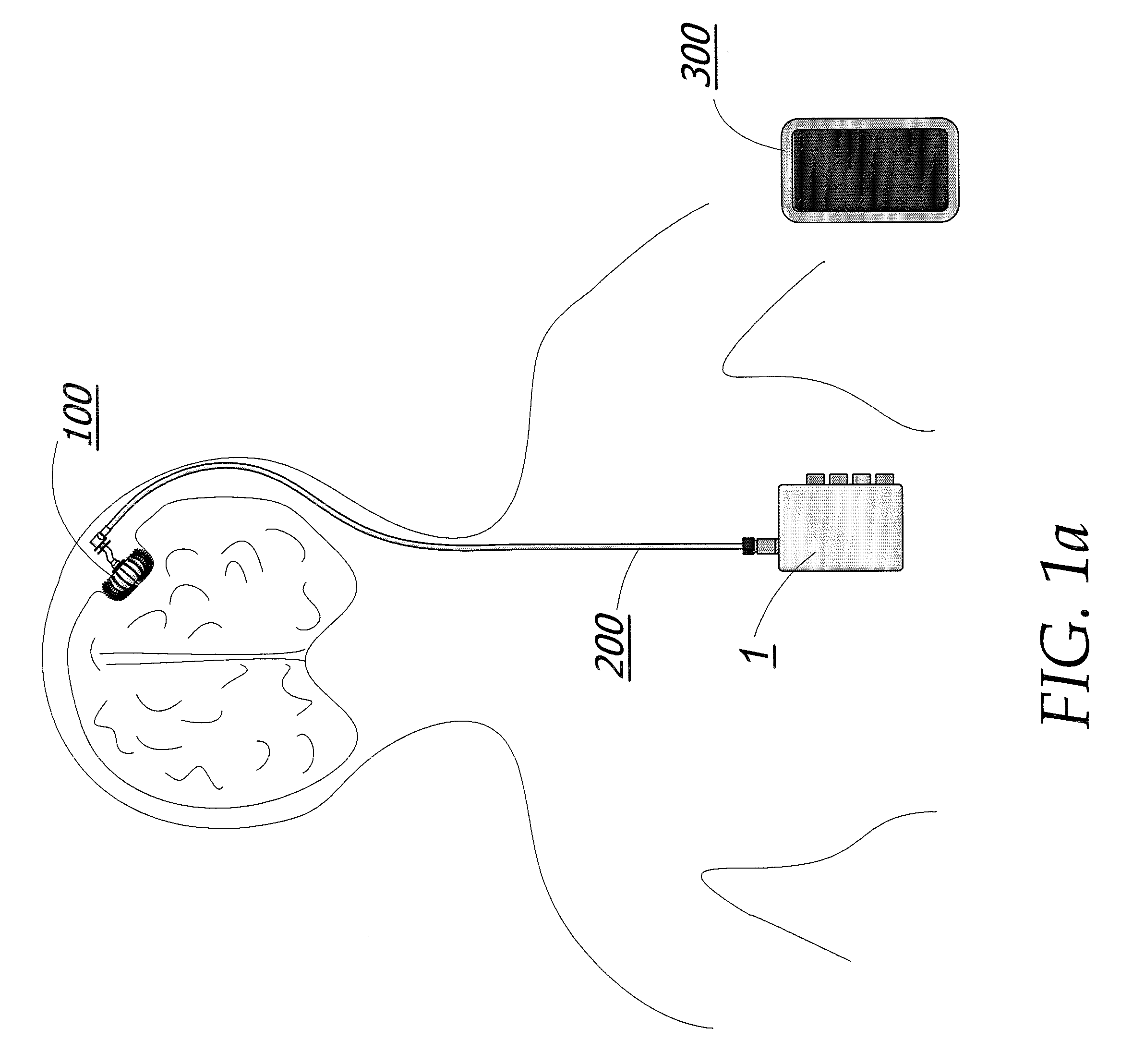Magnetic breather pump and a method for treating a brain tumor using the same
a breather pump and magnetic control technology, applied in the field of implantable drug delivery systems, can solve the problems of poor patient treatment effect, high mortality rate, and narrow options for available treatment, and achieve the effect of maximizing the anti-tumor effect of each agent and not increasing the toxicity to the patien
- Summary
- Abstract
- Description
- Claims
- Application Information
AI Technical Summary
Benefits of technology
Problems solved by technology
Method used
Image
Examples
Embodiment Construction
[0089]The implantable cranium pump unit 100 of the illustrated embodiment of the invention depicted in FIG. 10a comprises of two distinct polymer layers; an inner membrane 107 and the outer membrane 106 as best seen in FIG. 13c. Inner membrane 107 and outer membrane 106 are seamed together at the base and head of cranium pump 100 by a pump solenoid assembly 104 and a pump head assembly 103 respectively (FIG. 12). The pump solenoid assembly 104 and pump head assembly 103 provide a means for contracting and expanding the cranium pump 100 and are further discussed in more detail below. Both inner membrane 107 and outer membrane 106 are made from a skin-like polymer material. This material allows the pump 100 to be highly flexible during the drug delivery process and decreases the chances for infection or rejection from the body of a patient.
[0090]The space enclosed by inner membrane 107 is a medication reservoir 129 used for storing a medicating agent or a mixture of medicating agents ...
PUM
 Login to View More
Login to View More Abstract
Description
Claims
Application Information
 Login to View More
Login to View More - R&D
- Intellectual Property
- Life Sciences
- Materials
- Tech Scout
- Unparalleled Data Quality
- Higher Quality Content
- 60% Fewer Hallucinations
Browse by: Latest US Patents, China's latest patents, Technical Efficacy Thesaurus, Application Domain, Technology Topic, Popular Technical Reports.
© 2025 PatSnap. All rights reserved.Legal|Privacy policy|Modern Slavery Act Transparency Statement|Sitemap|About US| Contact US: help@patsnap.com



